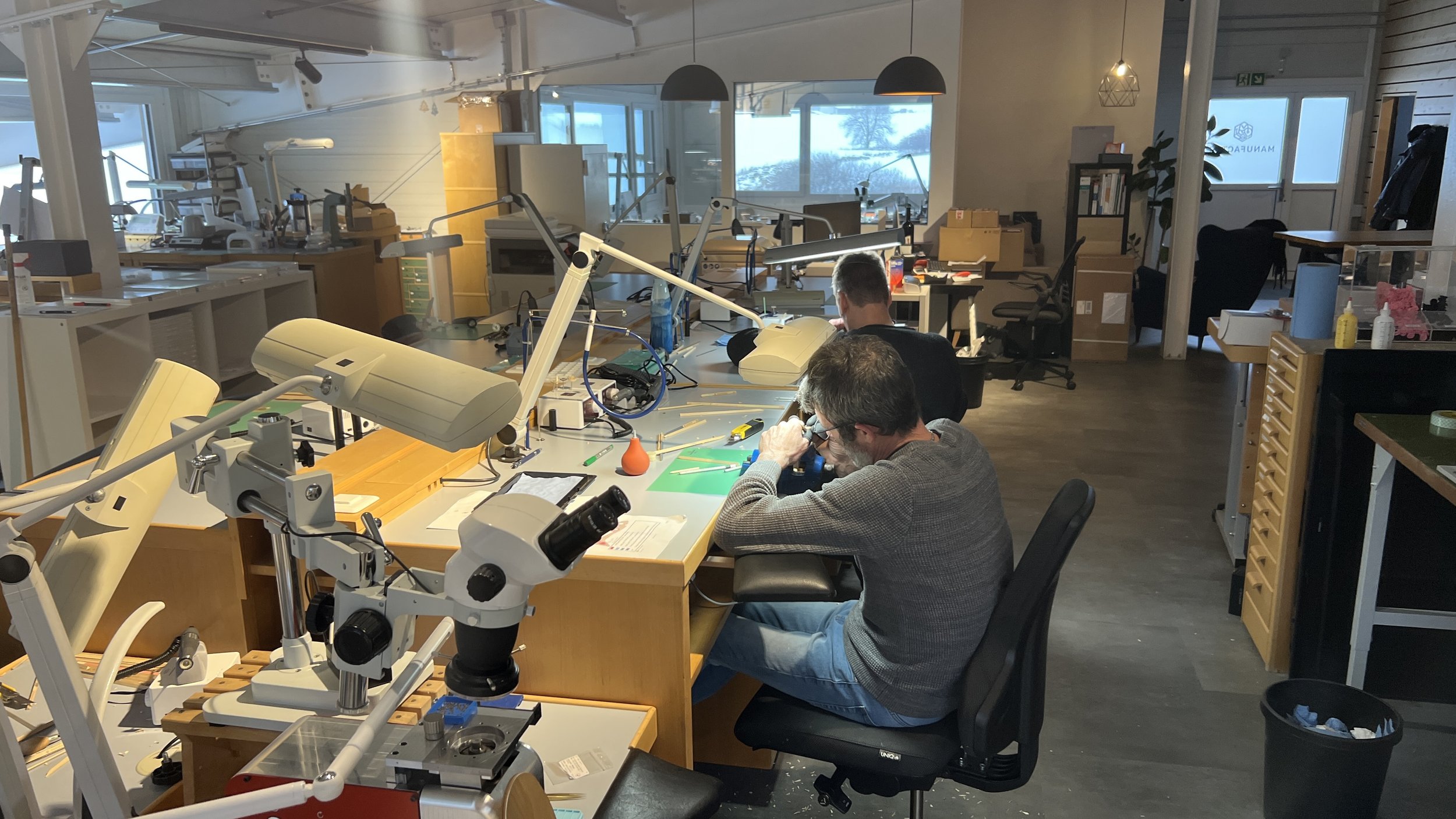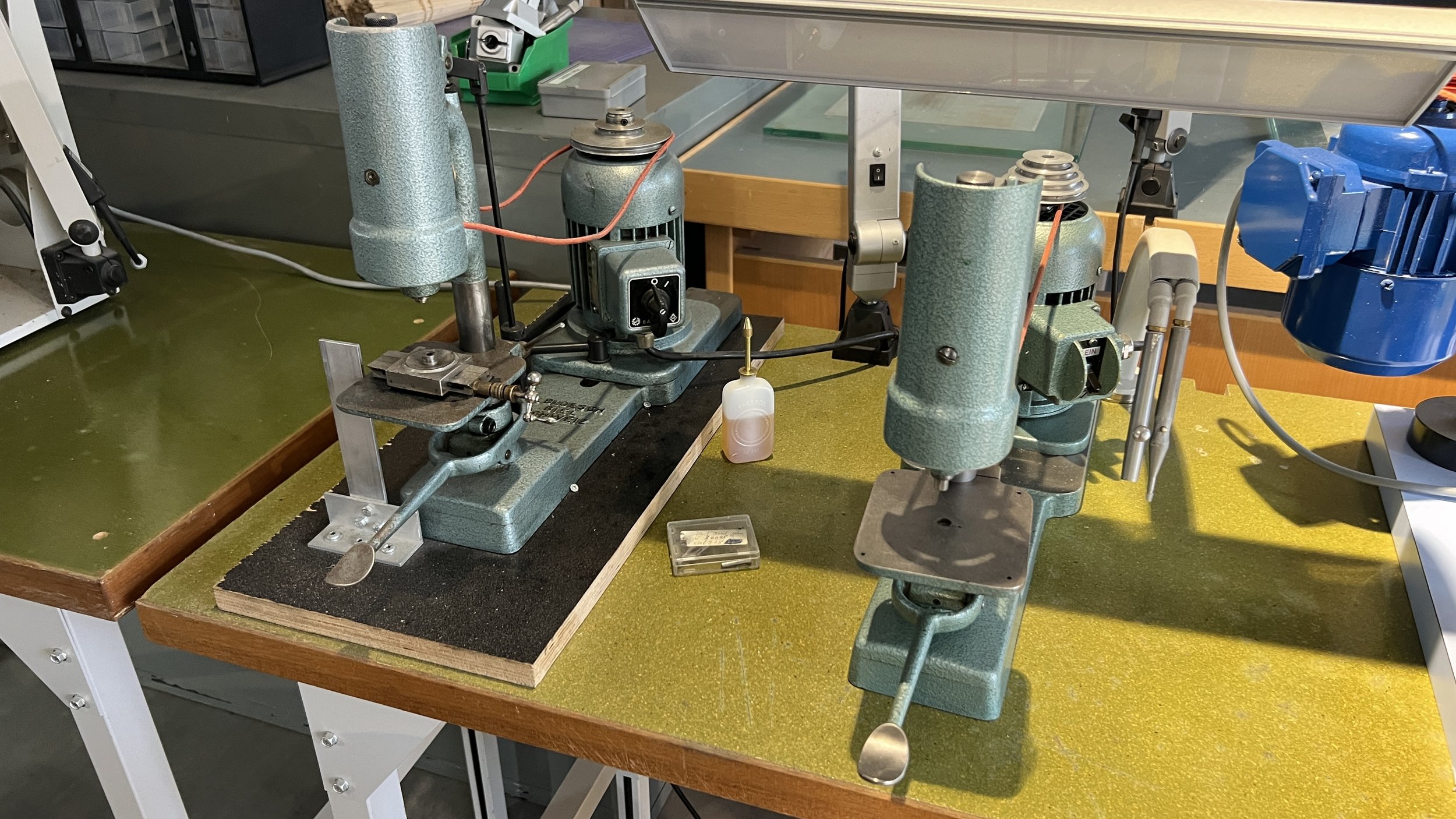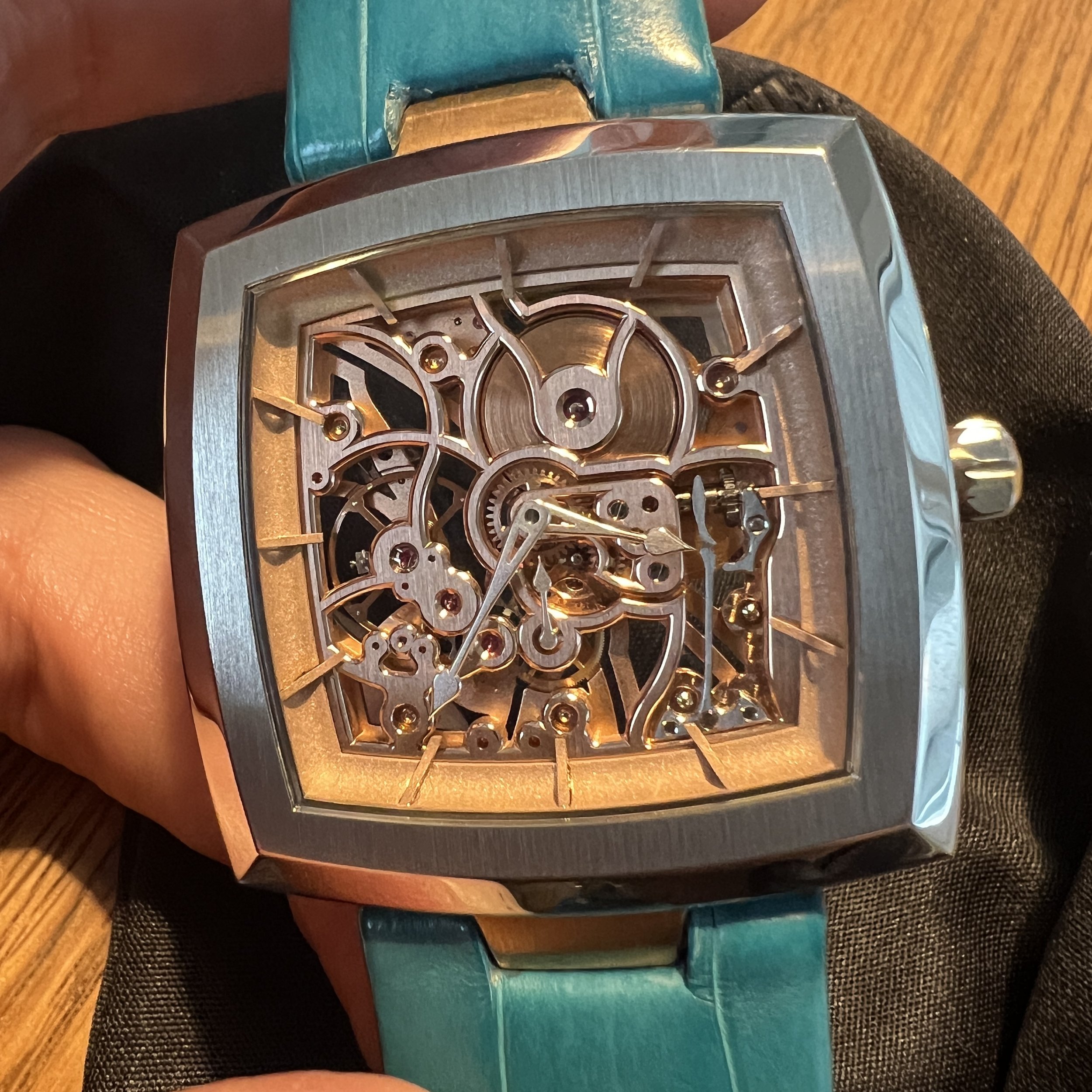Leaving Le Brassus, heading east towards L'Abbaye.
I pulled into Philippe’s workshop in an industrial area above the village of L’Abbaye and was shown to his office, where he has his bench separate from the main part of the workshop.
Philippe's watchmaking bench.
There are in effect two different companies operating inside this building, and as I spent time there I came to realize how he had set up these businesses. Another watchmaker with a good business sense, which I have to say is not always the reality. As with many highly creative artisans, the money and business side of the equation, is quite often less important and is not mastered as well as the creative aspect. I’ve come to recognize that, as in life, there is a balance that must be reached in order for these small operations to prosper. Manufactor SA is Philippe’s company producing parts and even assembling whole watches under contract for other brands, while Narbel & Co. is his own watch producer, where the Roots square cambered case watch is made.
The Roots watch. Philippe's first model!
A beautifully executed caliber with very fine hand finishing.
Many tiny parts were arranged in boxes and on trays for finishing. Oftentimes these parts are for other people who use Philippe’s specialty, that of very fine high end hand finishing of watch parts.
Parts having been finished in his workshop
Philippe set up his business Manufactor SA in order to initially make specialist parts for Audemars Piguet under contract. Given his time working for AP they knew his skill set and were willing to subcontract the high-end finishing of certain parts to him and his team. Today he is one of the few subcontractors that are even acknowledged by AP for doing contract work.
Philippe’s other benches seen in this photograph below, set up for the laborious task of hand finishing many tiny parts.
He then proceeded to show me the main workshop floor. Here were many benches for a variety of different jobs in the high-end hand finishing aspect of his business. There were several watchmakers working away on parts as I got to walk around.
One of the things that Philippe has been able to create in his business is a flex time schedule for watchmakers. He feels strongly that he can give this flexibility to watchmakers because work life isn’t always about 9 to 5. He realized that the big brands can only really work on a traditional strict schedule, and there are many highly skilled watchmakers, who can’t fit into that schedule with life’s necessities. So they can work on flex time for Philippe and he’s very happy to have that happen.
Another aspect of his business that I was interested in seeing were his tools of his trade. In particular, some wooden sticks with a triangular shaped profile, that have very specific gradations of polishing compounds or grit applied to them. These are what allows the inward angles in the bevels to be polished to such a high degree! He devised these tools make the watchmaker’s job a little bit easier. His company Manufactor SA does a lot of work for other companies that I’m not at liberty to reveal, but I can tell you I saw several parts of watches that were familiar to me. In fact the assembly of complete watch movements was occurring here too, for other watch brands.
The triangular cross sectioned wooden polishing sticks
Perlage station.
As I had first met Philippe earlier in the year during the Geneva watch week of Watches and Wonders in April and seen his initial watch, I was excited to see it in it’s place of birth. Since that initial watch was revealed, there has been a new watch. A skeleton version I had seen online but now I got to see it in person. The architecture of the original movement in the Roots model, with the classic finger bridges I imagine were designed with skeletonization in mind for the future! Philippe’s teacher at Audemars Piguet was one of the old-time watchmakers that was responsible for the Squelette double balancier Royal Oak, which has become one of the signature pieces from the great brand of AP. Looking at Philippe’s SKEL 1, one can clearly see the application and tremendous skills employed in the inward angles and bevelling of this caliber. Years of training to get to this ability level.
The SKEL-1
The wheel train of Philippe’s watch comes from the classic Peseux 7001 manual wind movement which is found in many a high-end watches, however Philippe’s execution to my knowledge, is unique in that he has redesigned the bridges to fit his square cambered case. I think his design showcases his work extremely well. One of the tenets of high-end artisanal skeletonization of a movement according to AP, is the design of the cut outs having no straight lines. These arcs in the watch movement design are all based on a central point, usually a jewel bearing or a screw. The design is completed initially with the use of a piece of paper, pencil and a compass. This is not designed in CAD and the elegance is revealed in the finished product.
On the wrist is is quite a watch. I appreciate the addition of the running sub seconds.
We then sat and discussed the independent watch business and where he sees the future of his business. He would definitely like to design and develop more wrist watches and I can see his drive and dedication will prevail here. He mentioned a trip to the US the following summer in 2024 where he was to be conducting his Master Class in watch finishing for watchmakers and we talked about doing an event with collectors at some stage in May, during that visit I look forward to putting together another Independent Watchmaker event. As it was time to head home, the other watchmakers had all left the office, we bade each other farewell and I headed back via the Lac de Joux.
L'Abbaye on Lac de Joux.
The sight of the buildings and snow covered land giving me that warm & fuzzy good feelings. The hour drive down the hill back to Neuchâtel was quite pleasant, and my head was filled with images of watches & watch parts, and a great day.
Many thanks Philippe for your time.
















